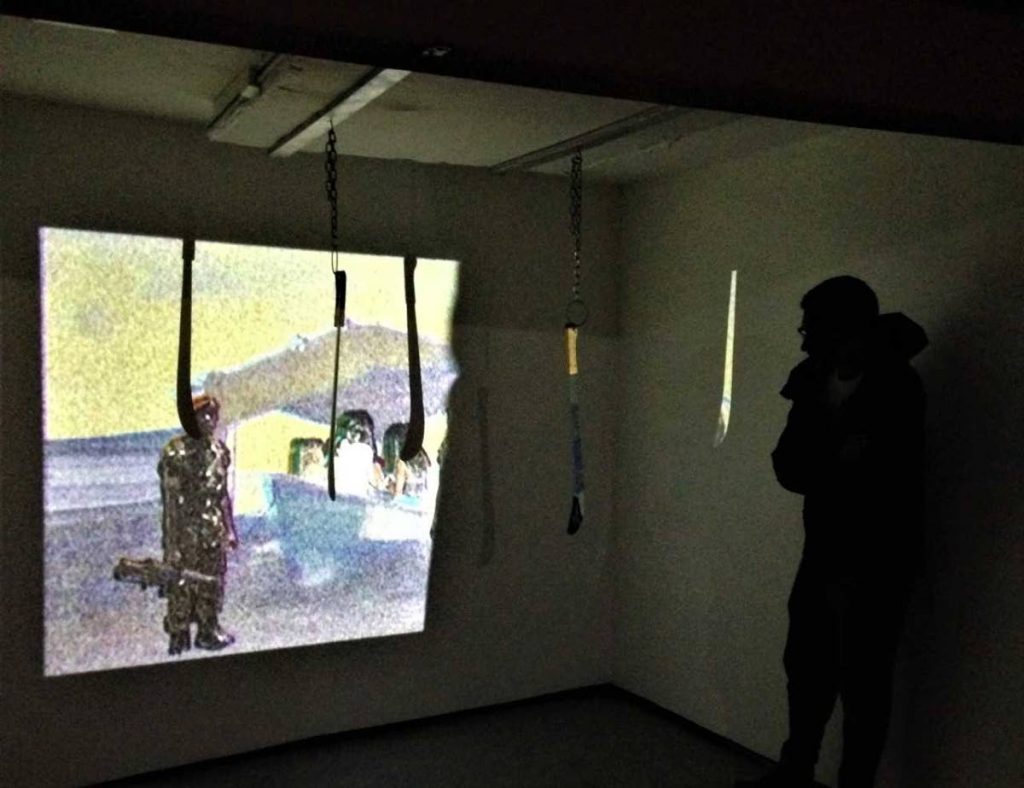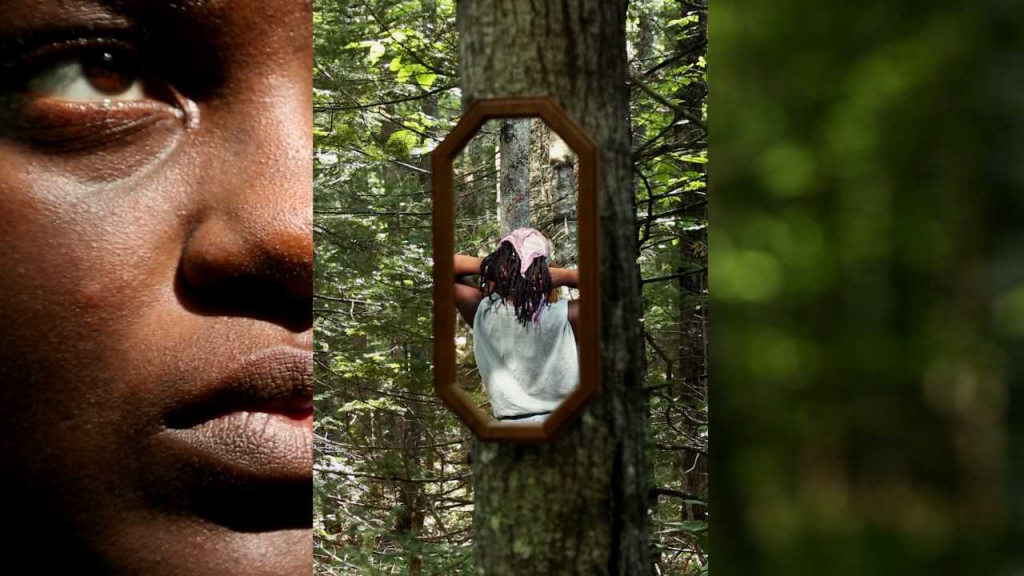A migrant artist arrives at Terra Nullius

CUTLASSES with blades made of mirror glass were the centrepiece of an untitled work in progress shown by artist Kearra Amaya Gopee on March 27 at the conclusion of their Alice Yard residency.
The work – Gopee called it a “prototype” – was shown alongside a video installation, Artifact #3: Terra Nullius. The mirrored cutlasses Gopee made at Alice Yard during their three-week residency at the Woodbrook art space. The video installation was completed at a recent residency at NLS in Kingston, Jamaica.
Gopee is a 24-year-old from Carapichaima, Central Trinidad; the residency in Woodbrook was the longest they (Gopee's preferred pronoun) ever lived in Port of Spain, said the former newspaper photojournalist. The cutlass arose from their seeing how "town" people turn away from the island's agricultural heritage.
"Almost everything you have is built on it," they said, pointing to the irony of this distance between rural and urban. Before the petrochemical industry, it was sugar and cocoa that built this island's wealth.
The cutlass resonates with the artist's ongoing engagement of the legacies of violence and trauma in the Caribbean. These legacies are tied to agriculture and to migration: the movement and murder of black and brown bodies forced to wield those cutlasses; the white male bodies brought to control the other bodies in the space.
In Gopee’s work, migration and its effects on family are primary concerns. They left Trinidad in 2013, aged 18, and in 2017 graduated from the Tisch School of the Arts at New York University. Their Artifact series deals with their "own struggle with migration, how memories are lost over time, and trauma passed down through lineages. My own movement out of Trinidad has definitely changed the relationships between myself and my mother, and myself and my grandmother."
Artifact #1 is Tiger Balm, their senior thesis at Tisch Gopee writes in the description of the work on their website: “In the early 2000s, my mother’s and my travel documents were stolen by her husband to prevent her re-entry into the United States. This anchored us in our home country of TT where I was subsequently raised in my grandmother’s home until coming of age to apply for a new passport on my own.” Tiger Balm’s central feature is a mirrored bureau with a video of the artist and their mother shown on a screen in the mirror, sometimes with one or the other effaced by static.
Artifact #2, Nylon Pool, is made of pointed, family-themed prose poems turned into crossword puzzles against a curated series of family pictures, the resulting image projected as a whole. It speaks about their grandmother and Gopee's anxieties around the matriarch's ageing, what that might mean for the possibility of a future relationship between them, and the loss or distortion of family histories. Ultimately, the Artifact series considers what family is, using mirrors and lenses as both statement and media.

Artifacts #1 and #2 "were meditations on failure, and how the nuclear family has failed me," they said. "Artifact #3 is me looking at myself and thinking about alternative family structures. In the video I'm looking back and literally asking my ancestors whether we were doing the right thing. It's me meditating on what an ideal family would look like." Their ideal considers "the queering of family relationships" and chosen families, not blood relations.
The title Terra Nullius is a term used in international law to designate a place that is uninhabited – no man's land – and therefore able to be claimed by anyone. "This third one is really difficult, me quantifying possibility, me not doing some of the things my grandmother has done, my mother has done."
After graduating from Tisch, they spent a year working at Triangle Arts Association as programmes and development manager and since last year have been on a series of prestigious residencies as a visual and conceptual artist. One, at Skohegen, Maine, was intensely unsettling.
"It was a bit scary for me. It was a microcosm of the art world in a really tiny bubble. There's no WiFi. There's no cellphone reception. You can't run from it. But it was up there I realised I wanted to bifurcate my practice," they said.
The birfucation splits Gopee between making work and using their practice to volunteer with or use their resources for groups in the queer, black and migrant communities that they care about. During their time at Alice Yard they organised three meetups for the Black Lunch Table, a US-based arts movement seeking to increase the number of African-diaspora artists on Wikipedia.
Why do they invest so much into the organising part of their practice?
"There's a question of access. Who's getting to see my work about migration? The work is nothing without an audience."
But the work interrogates the lives and experiences of people who are outside of the "academic and art circles" who normally attend art exhibitions.
"Shouldn't it be that they could actually see it? Art becomes more valuable when the people in it are able to see themselves."
Gopee expects to begin an MFA this year in the US.

Comments
"A migrant artist arrives at Terra Nullius"